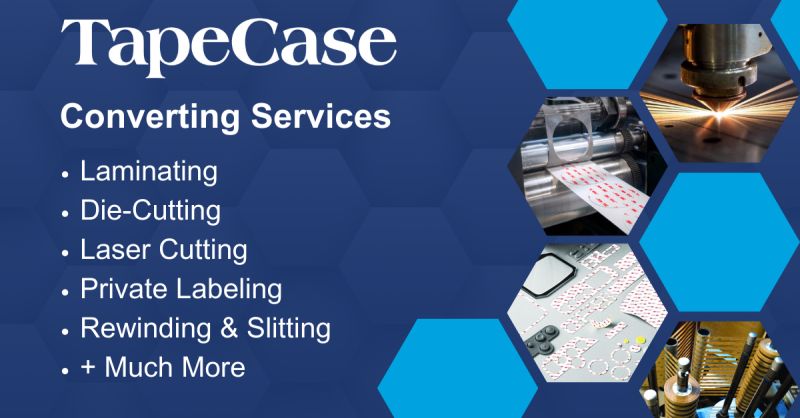

- Contributions by industrial experts with engineers in mind
- Focused on specialty-chemical material applications and selection
Knowledge Center
Sylgard 184 by DOW is the Top Choice for a Transparent, Silicone Encapsulant. Read Why:

Dow Sylgard® 184 Encapsulant
Selecting the right encapsulant for a printed circuit board or other high-tech manufacturing effort means finding the formula that matches the job's exact criteria. In a wide variety of cases, Dow Corning Sylgard®184 elastomer will be your best choice. This is a silicone encapsulant defined by its transparency, wide usable temperature range and ability to effectively encapsulate nearly all porous and nonporous substrates. The versatility and user-friendliness of Dow 184 make it a go-to choice across many types of manufacturing.
Top Reasons to Select Dow Sylgard® 184
There is no one industry where Dow Corning Sylgard® 184 is a top choice. The widespread use of sensitive and expensive technological components such as circuit boards, sensor modules, LED lighting, power supplies, connectors, high voltage resistor packs and solar cells means there is a universal need for silicone encapsulants with the exact properties of Dow 184. Especially in sectors with high-complexity needs such as aerospace and avionics, encapsulant choice can have a serious impact on the quality and usability of essential components.
A Desire for a Simplified Curing Process with no Exotherm
Sylgard® 184 is cured at room temperature, and there is no need to bring in extra equipment for the curing process. Using the encapsulant is simple, just combine the base and curing system at a 10:1 ratio and pour into the module. Unlike epoxy encapsulants, silicone-based options don't create any exotherm, so if a module cannot stand heat during manufacturing, engineers can use Dow 184. When using Sylgard® 184 or another silicone encapsulant in an application that requires adhesion, the first step is to prime the surfaces.
The curing process occurs even when a relatively thick coat of the elastomer is applied on any part of the component, and there is no post-cure process needed. The finished part is simply ready to use the minute curing ends, gaining shock and vibration absorption alongside environmental resistance.
A Low Viscosity Requirement
When working with conformal coatings for their components, engineers may find they are unable to easily get 100% coverage and a reliable seal. Spraying and UV shadow coating may not be able to reach every pin or other protrusion from the surface of a component. This is where low-viscosity silicone options such as Sylgard® prove their worth, flowing easily into the nooks and crannies of any module and providing a 100% seal.
Care should be taken to minimize air entrapment. If that is not possible, the recommended use for silicone based elastomers may include dispensing under vacuum conditions, particularly if the component being potted or encapsulated has many small voids. In cases where vacuum conditions aren't available, it's best to evacuate the component after pouring the encapsulant.
A Need for Finished Components with a Wide Useful Temperature Range
Engineers designing components that will be expected to hold up under heat, cold or fluctuating temperatures can turn to Sylgard® 184 as their encapsulant of choice. This silicone elastomer can function from -49F to 392F (-45C to 200C). This makes the substance valuable when companies are creating automotive circuit boards or other sensitive devices used in environments that will get hot regularly.
Silicone encapsulants, in general, are well-suited for these components and expected to serve in extreme temperatures or deal with frequent changes. Engineers who have tried urethane or epoxy options and found their encapsulants are being overwhelmed by the temperatures experienced by the finished components can switch to Sylgard® 184 or a similar silicone offering.
A Need for Repairability
The more expensive and complex a finished component is, the more important it is to work repairability into the final design. When a module fails, being able to isolate the problem and repair it is an important value-adding trait. This is where the transparency of Sylgard® 184 comes into play. While some applications call for opaque encapsulants, a see-through silicone is highly useful in any case where it's better to see individual components.
A circuit board or other part coated in Sylgard® 184 allows technicians to cut in and repair individual elements, as they can see clearly where everything is located. For this reason, any application for expensive electronic components calls for silicone rather than epoxy as the elastomer of choice. After scraping, rubbing or dissolving the encapsulant for repairs, the next step is to roughen exposed surfaces, rinse them with solvent, dry them and spot-apply elastomer in the affected area to form a matrix with the existing surface.
Dow Sylgard® 184 is One of the Most Versatile Encapsulants
Some searches for the right encapsulant can take a great deal of trial and error, while others begin and end with a proven, versatile choice such as Dow Corning Sylgard® 184. When working on a new component in need of temperature resistance as well as shock and vibration absorption, as well as a high degree of repairability, Sylgard® 184 can be the right choice for your needs.
Gluespec is your resource for data on this and other industrial adhesives and encapsulants. Compare, contrast and perform research with Gluespec to make your next project smooth and easy.





